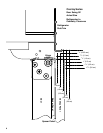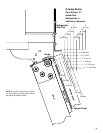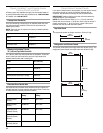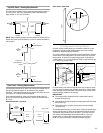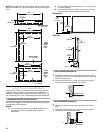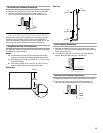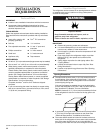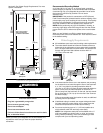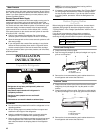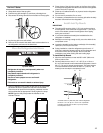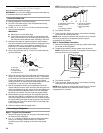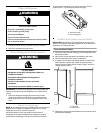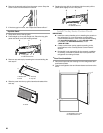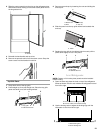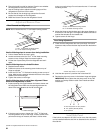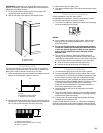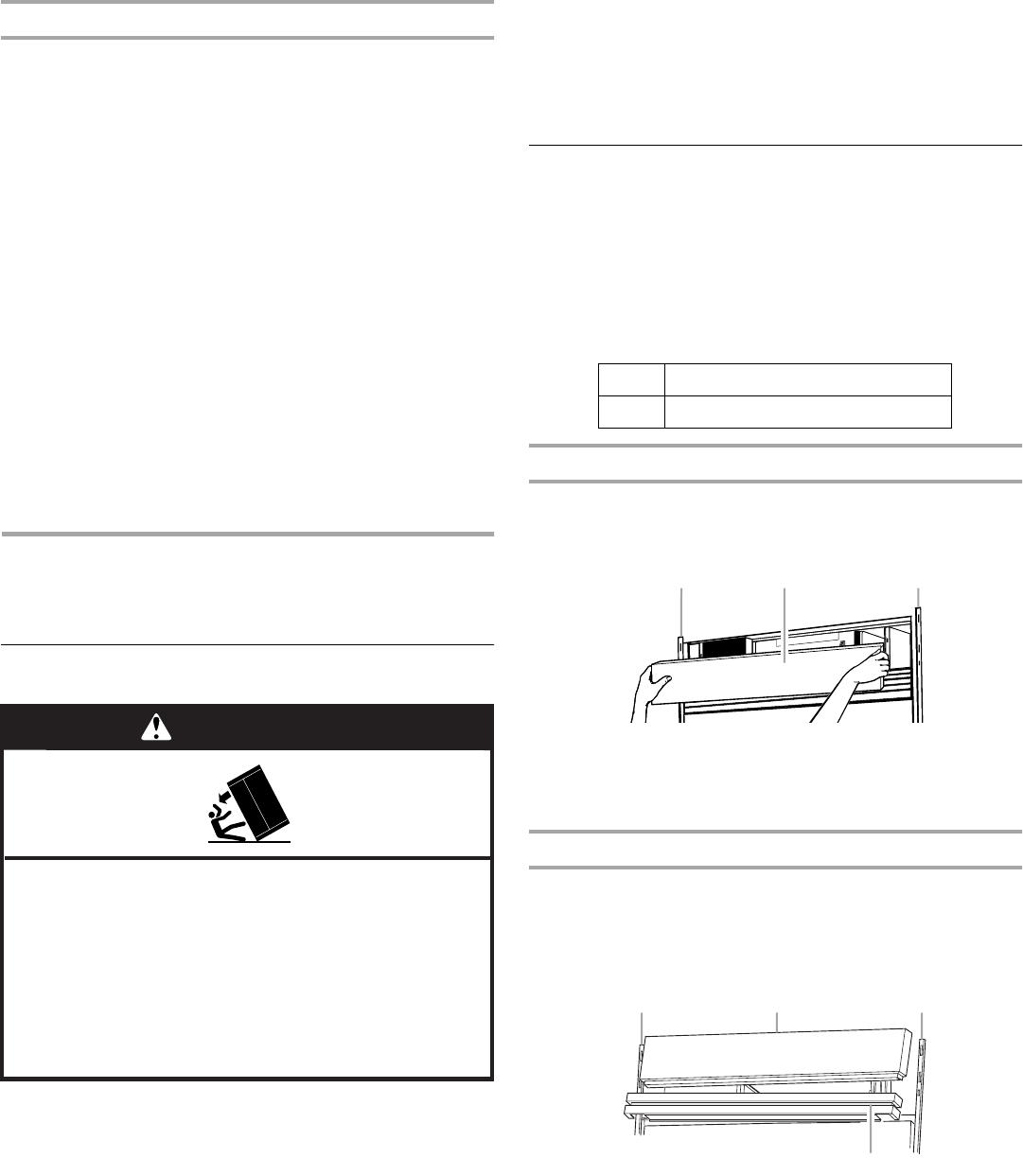
16
Water Pressure
A cold water supply with water pressure between 30 and 120 psi
(207 - 827 kPa) is required to operate the water dispenser and ice
maker. If you have questions about your water pressure, call a
licensed, qualified plumber.
Reverse Osmosis Water Supply
IMPORTANT: The pressure of the water supply coming out of a
reverse osmosis system going to the water inlet valve of the
refrigerator needs to be between 30 and 120 psi (207 - 827 kPa).
If a reverse osmosis water filtration system is connected to your
cold water supply, the water pressure to the reverse osmosis
system needs to be a minimum of 40 to 60 psi (276 - 414 kPa).
If the water pressure to the reverse osmosis system is less than
40 to 60 psi (276 - 414 kPa):
■ Check to see whether the sediment filter in the reverse
osmosis system is blocked. Replace the filter if necessary.
■ Allow the storage tank on the reverse osmosis system to refill
after heavy usage.
■ If your refrigerator has a water filter cartridge, it may further
reduce the water pressure when used in conjunction with a
reverse osmosis system. Remove the water filter cartridge.
If you have questions about your water pressure, call a licensed,
qualified plumber.
INSTALLATION
INSTRUCTIONS
Unpack the Refrigerator
IMPORTANT:
■ Do not remove the protective film until the refrigerator is in its
operating position.
■ All four leveling legs must contact the floor to support and
stabilize the full weight of the refrigerator.
■ Keep the cardboard shipping piece or plywood under the
refrigerator until it is installed in the operating position.
1. Remove and save the literature package and parts bag taped
to the refrigerator door. Remove the four brackets (two on
each side) that attach the shipping base to the refrigerator
bottom.
NOTE: Do not remove tape and door bracing until the
refrigerator is in its final position.
2. If necessary, reduce the tipping radius. See “Tipping Radius”
for ceiling height requirements or “Reduce Tipping Radius”
for step-by-step instructions. If you do not need to reduce
the tipping radius, proceed to “Move the Refrigerator into
House.”
Reduce Tipping Radius
(if required)
Before bringing the refrigerator into the home, be sure there is
adequate ceiling height to stand the refrigerator upright. See
“Tipping Radius” in the “Design Specifications” section for more
information.
If you do not have adequate ceiling height to stand the
refrigerator upright, the tipping radius can be reduced by
removing the top grille and side trims (see the following chart).
Classic and Overlay Series
1. Grasp both ends of the top grille.
2. Push the top grille straight up; then pull straight out. Lay the
grille on a soft surface.
3. Remove the six screws attaching each cabinet side trim to
the refrigerator and remove the side trims.
Architect
®
Series
1. Grasp both ends of the louver panel. Push the louver panel
straight up; then pull straight out. Lay the panel on a soft
surface.
2. Grasp both ends of the top grille. Push the top grille straight
up; then pull straight out. Lay the top grille on a soft surface.
3. Remove the six screws attaching each cabinet side trim to
the refrigerator and remove the side trims.
WARNING
Tip Over Hazard
Refrigerator is top heavy and tips easily when not
completely installed.
Keep doors taped closed until refrigerator is
completely installed.
Use two or more people to move and install
refrigerator.
Failure do so can result in death or serious injury.
Model Reduced Tipping Radius
36 88" (223.5 cm)
A. Top grille
B. Cabinet side trim
A. Top grille
B. Cabinet side trim
C. Louver panel
B BA
AB
B
C



